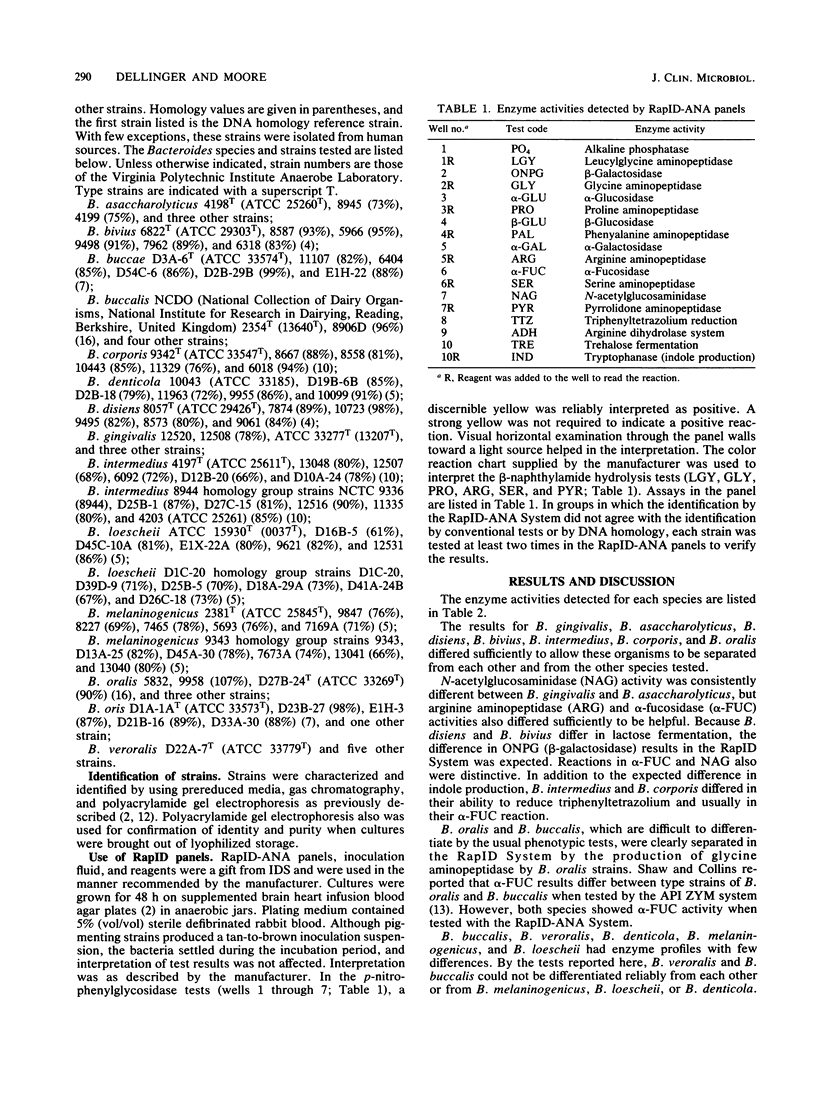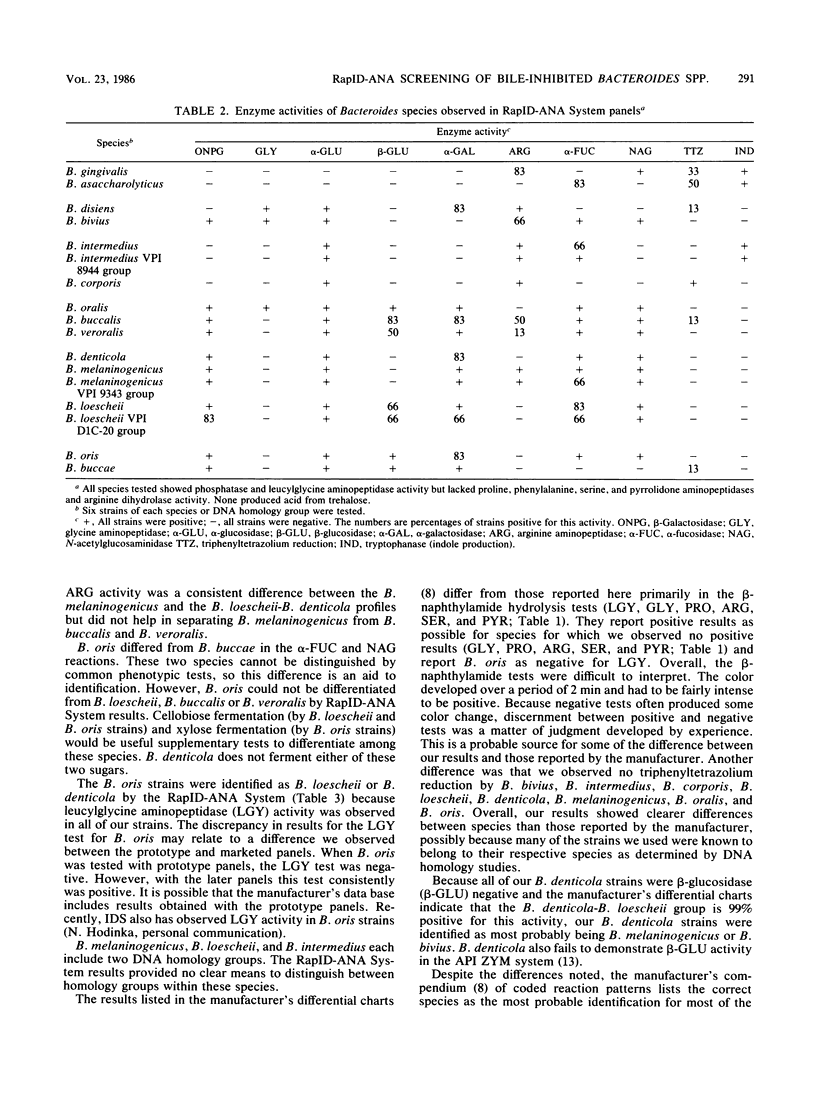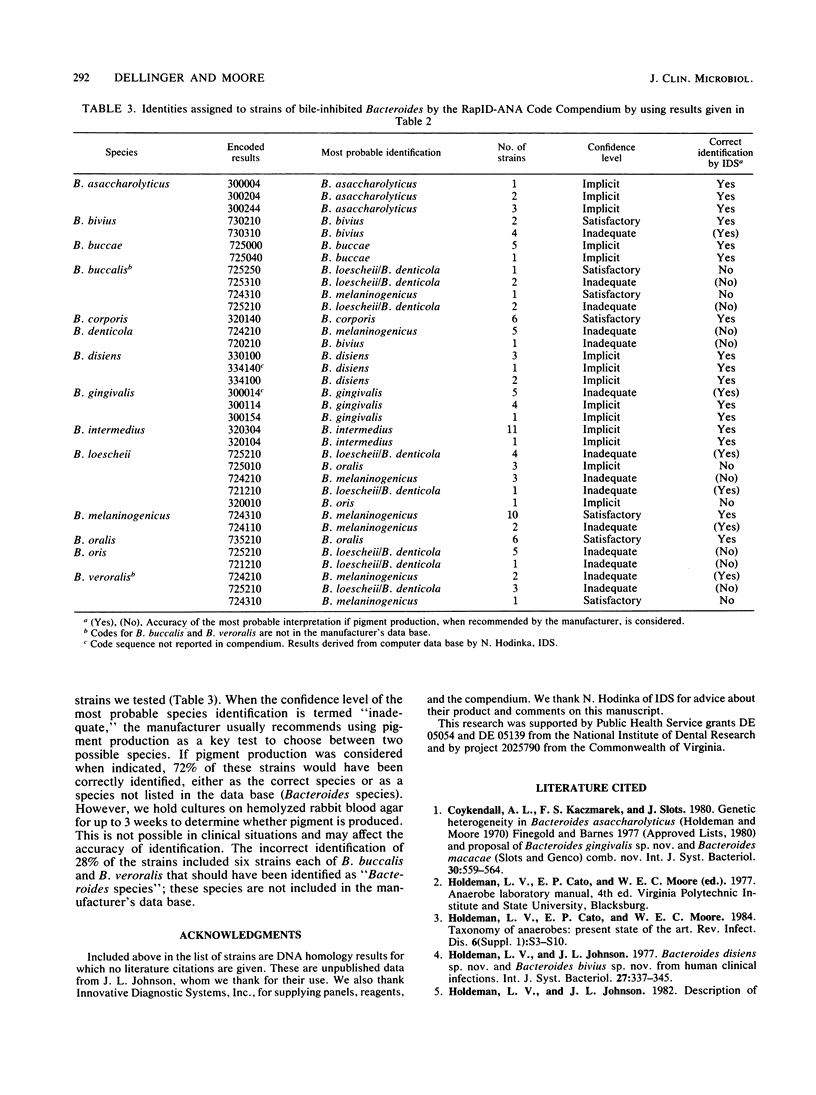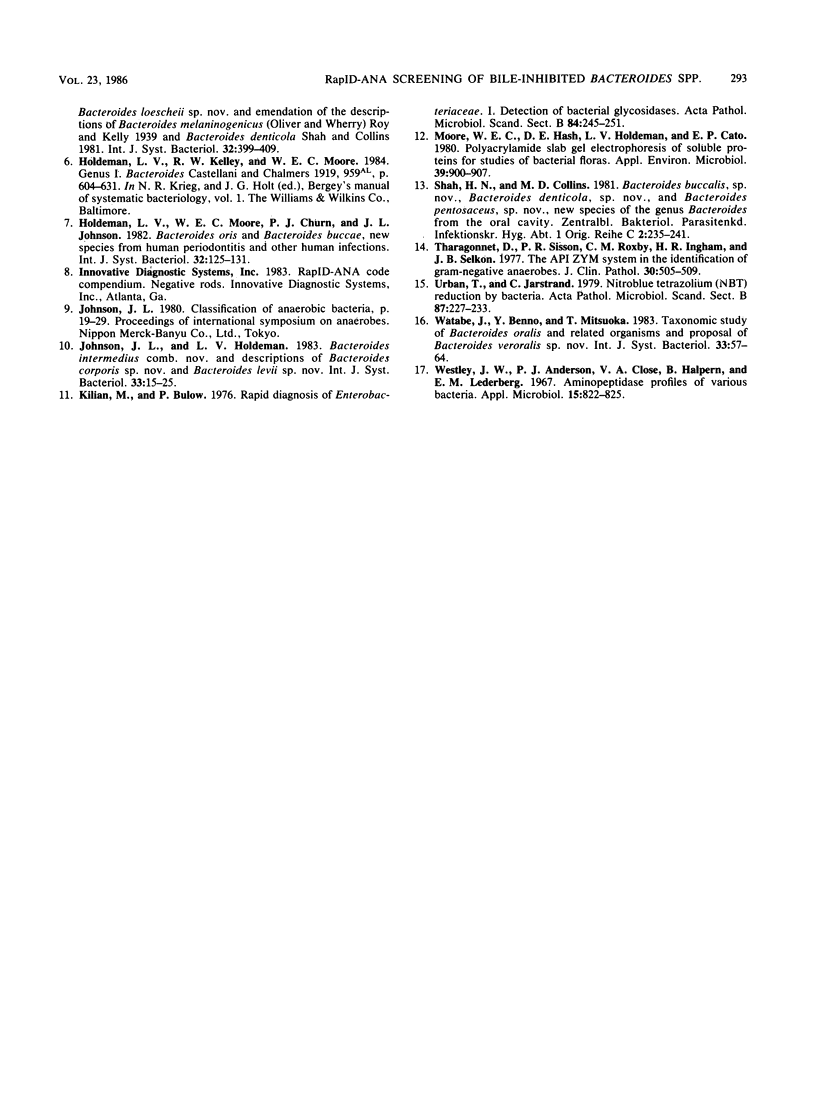Abstract
The RapID-ANA System (Innovative Diagnostics Systems, Inc., Atlanta, Ga.) was used to test 102 strains of 14 species of phenotypically similar bile-inhibited Bacteroides from humans. Bacteroides oris, Bacteroides veroralis, Bacteroides buccalis, Bacteroides melaninogenicus, Bacteroides loescheii, and Bacteroides denticola had very similar enzyme activity profiles. Clear differentiation of these six species by the RapID-ANA System was not possible, but tests for arginine aminopeptidase and beta-glucosidase were helpful. Bacteroides oralis, Bacteroides intermedius, Bacteroides corporis, Bacteroides disiens, Bacteroides bivius, Bacteroides gingivalis, Bacteroides asaccharolyticus, and Bacteroides buccae each had unique enzyme activity profiles. No consistent differences in enzyme activities were found between the two DNA homology groups within Bacteroides melaninogenicus, Bacteroides loescheii, or Bacteroides intermedius. Tests for glycine aminopeptidase, alpha-galactosidase, arginine aminopeptidase, alpha-fucosidase, N-acetylglucosaminidase, reduction of triphenyltetrazolium, and production of indole were helpful in the differentiation of the species studied.
Full text
PDF




Selected References
These references are in PubMed. This may not be the complete list of references from this article.
- Holdeman L. V., Cato E. P., Moore W. E. Taxonomy of anaerobes: present state of the art. Rev Infect Dis. 1984 Mar-Apr;6 (Suppl 1):S3–10. doi: 10.1093/clinids/6.supplement_1.s3. [DOI] [PubMed] [Google Scholar]
- Kilian M., Bülow P. Rapid diagnosis of Enterobacteriaceae. I. Detection of bacterial glycosidases. Acta Pathol Microbiol Scand B. 1976 Oct;84B(5):245–251. doi: 10.1111/j.1699-0463.1976.tb01933.x. [DOI] [PubMed] [Google Scholar]
- Moore W. E., Hash D. E., Holdeman L. V., Cato E. P. Polyacrylamide slab gel electrophoresis of soluble proteins for studies of bacterial floras. Appl Environ Microbiol. 1980 Apr;39(4):900–907. doi: 10.1128/aem.39.4.900-907.1980. [DOI] [PMC free article] [PubMed] [Google Scholar]
- Tharagonnet D., Sisson P. R., Roxby C. M., Ingham H. R., Selkon J. B. The API ZYM system in the identification of Gram-negative anaerobes. J Clin Pathol. 1977 Jun;30(6):505–509. doi: 10.1136/jcp.30.6.505. [DOI] [PMC free article] [PubMed] [Google Scholar]
- Urban T., Jarstrand C. Nitroblue tetrazolium (NBT) reduction by bacteria. Some properties of the reaction and its possible use. Acta Pathol Microbiol Scand B. 1979 Aug;87(4):227–233. [PubMed] [Google Scholar]
- Westley J. W., Anderson P. J., Close V. A., Halpern B., Lederberg E. M. Aminopeptidase profiles of various bacteria. Appl Microbiol. 1967 Jul;15(4):822–825. doi: 10.1128/am.15.4.822-825.1967. [DOI] [PMC free article] [PubMed] [Google Scholar]


